We rejoin my Hokkaido Landscape Photography Tour again this week, picking up the trail as we reach the West coast of the island, for some beautiful seascapes, as we journey on to the northern-most point of Japan.
[download id=”55691″]
In stark contrast to our three days in the Biei area, with her beautiful rolling snow-covered hills, when we hit the coast we are generally greeted by weather that fits the mood of the Japan Sea.
Shinto “Torii” Gate
After a sushi lunch during our drive over to the coast, we settled for the last hour of daylight on the beach facing the Shinto “Torii” Gate, that you see in this first image for today.
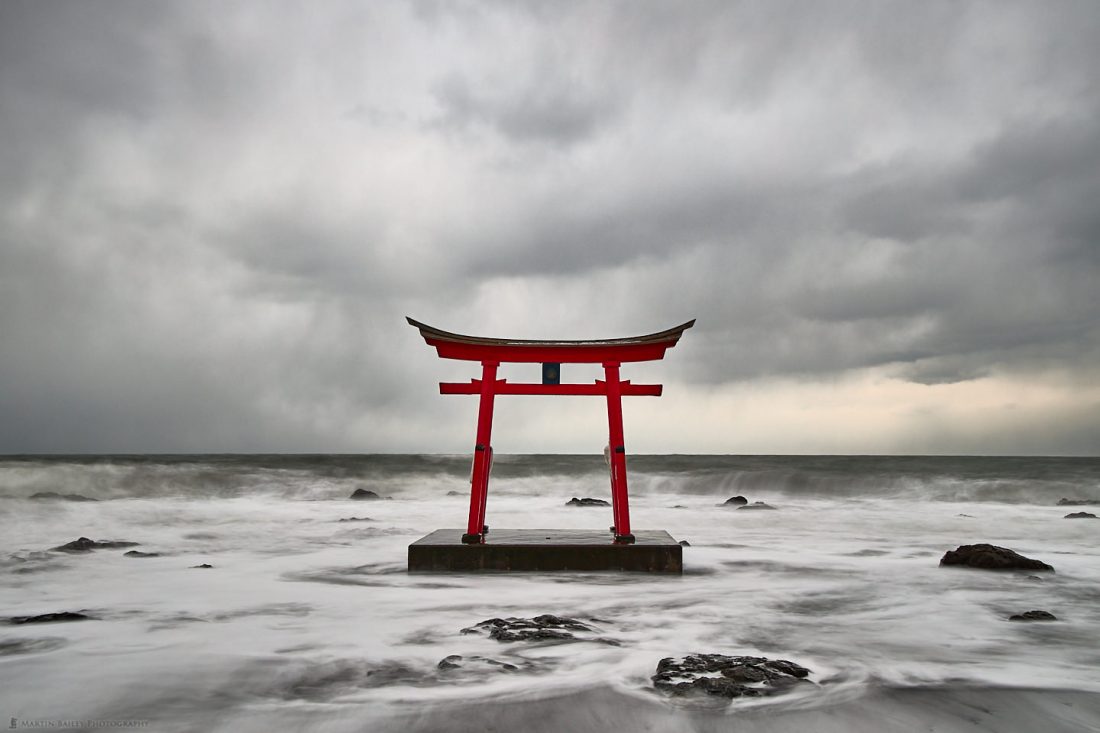
I was so pleased to get this heavy sky behind the Torii, and using the Luma Range mask tool in Capture One Pro, I was able to select just the darker parts of the sky and darken them down a little further, leaving the brighter areas alone, introducing some dramatic contrast to the photograph.
I also took the White Balance picker and from the white water got a custom white balance of just under 12,000 Kelvin, which brings out a little bit of warm sunlight on the horizon. I decided to keep these shots in color so as to not lose the vermillion color in the gate, or the warm color in the sky.
By the time I shot this, the light was so low that even at f/11 with an ISO of 250 I was still able to leave the shutter open for 4 seconds, which is why the sea is smoothed over in places, but this is also short enough to leave us some texture in the water and we can still see the waves forming a somewhat daunting looking line behind the gate.
Frozen “Torii” Gate
The following morning, after an early breakfast, we went back to the gate, and I was happy to see a covering of snow and icicles on the gate itself, so I shot it from the side to highlight that, and also to included the line of tetrapods to the left of the gate.

For this shot, I used a 10 stop Neutral Density filter to give me a 1-minute 30-second exposure at f/11, ISO 100. This long exposure is responsible for making the waves all disappear leaving a kind of mist over the rocks in the sea and the tetrapods.
I also really like the layers of fallen snow on the beach, which was another element that added to my decision to photograph the gate from this angle. The long exposure also caused the numerous waves that came in and out, while the shutter was open, to leave varying tones of white on the beach, accentuated by the dark sand.
Fisherman’s Workshop
After photographing the gate for a while, we made our way back to the bus, and on the way, I stopped to photograph the window of one of the Fisherman’s Workshops in the harbor.
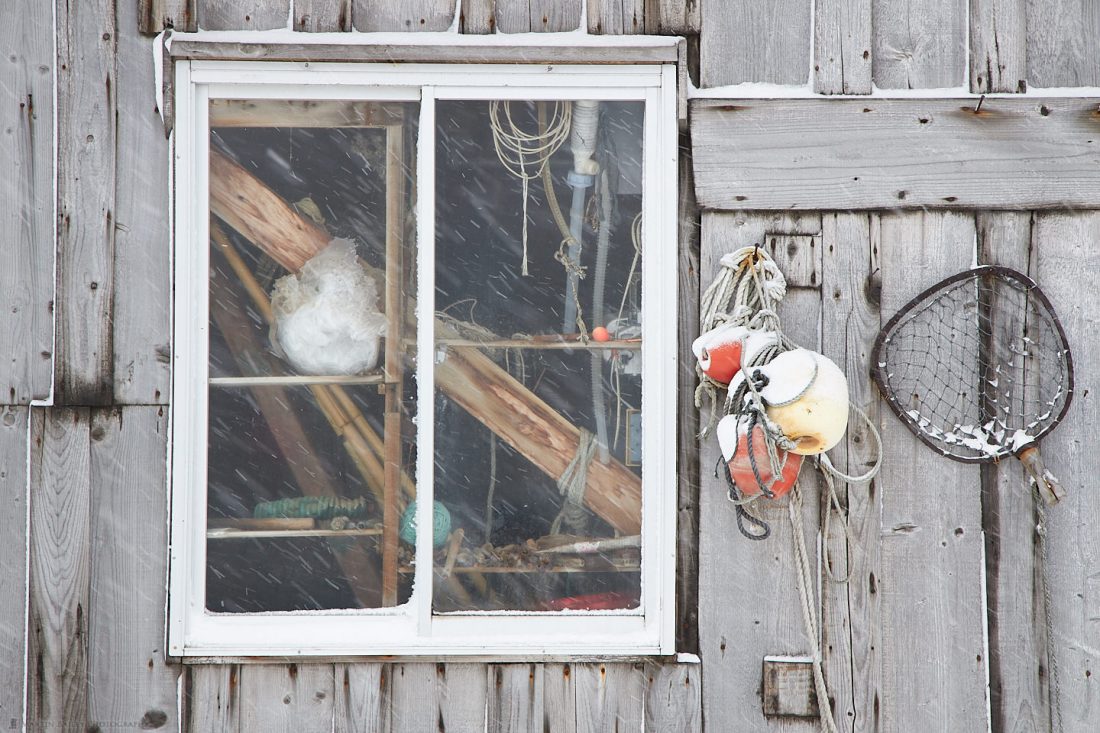
I like the bleached look of the wood, from the summer months, as much as the harsh winter weather I imagine, and the ball of twine used to fix the fishing nets, as well as the hand-pump for pumping diesel into the boats, all add to the story. As, of course, do the fishing net and floats on the wall next to the window.
I increased my ISO to 250 for this, because I was hand-holding the EOS R, and I also wanted to freeze the snow to a degree, and the resulting 1/80 of
Icing Sugar Beach and Tetrapods
The next stop gave us a few hours on a beach an hour south of the previous location, where the tetrapods half-buried in the sand, the waves and a stream that flows into the sea all collaborate to form some beautiful patterns, especially with a slightly long shutter speed, and another sprinkling of snow on the black sand.
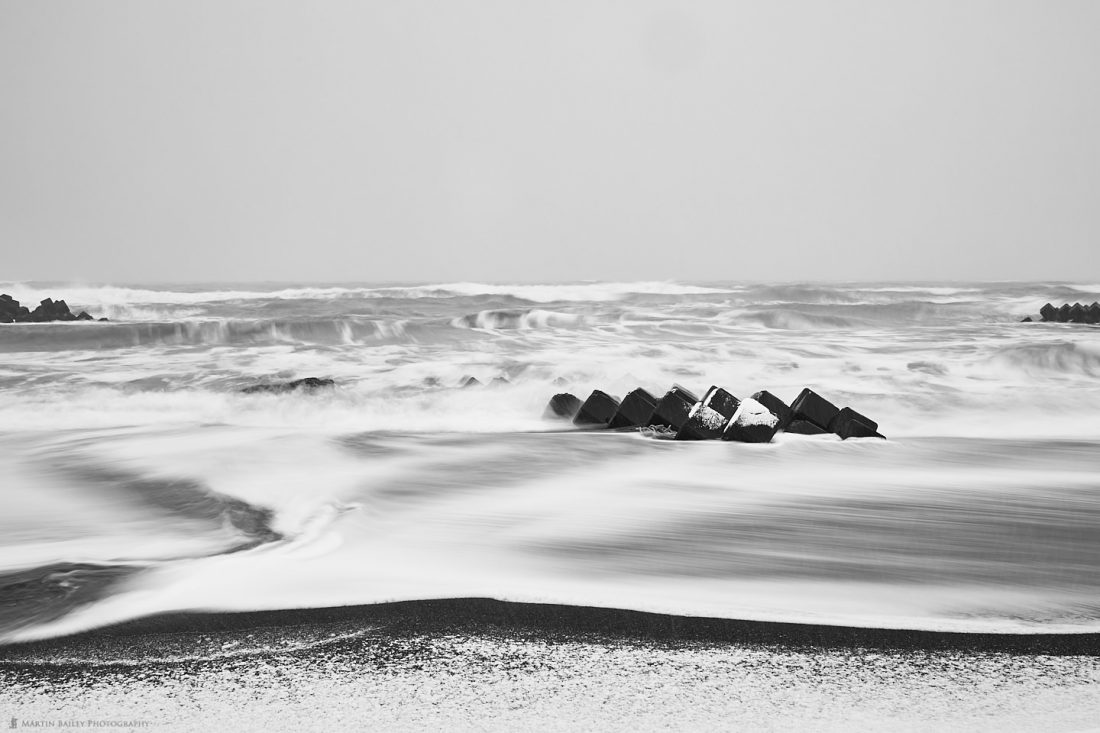
The timing of this kind of shot can be critical, so although I usually just use the 2 second timer for landscape work, for this kind of photograph I use a cable-release. With the EOS R I actually bought the new Canon Bluetooth Remote Release BR-E1, which I used to release the shutter exactly as the time was right for the maximum effect of these waves rolling in and washing up the beach.
I was actually really impressed that when you connect the Bluetooth Remote, it automatically switches from a 2 second timer to instant release, which was just what I wanted. For this shot I was using an aperture of f/16 for a 0.6 second exposure at ISO 100, and a focal length of 39mm.
Stream and Tetrapods
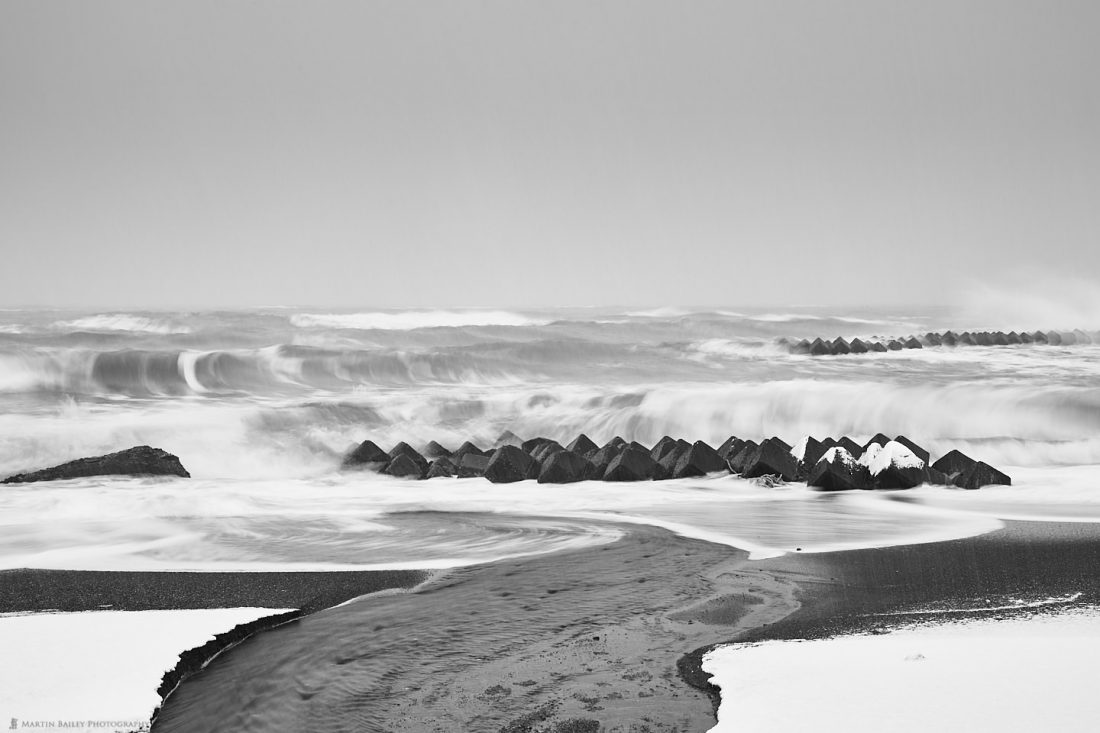
I spent quite a long time for this shot, waiting for the various elements to come together. The large wave rolling in and crashing over the distant tetrapods, and the foreground wave behind the tetrapods, but also the wave that has just broke, high enough to wash up the beach forming those beautiful patterns.
And then the stream runs down into the waves on the beach, forming a whirlpool. I love it when a plan comes together! My settings for this image were the same as the previous one, but slightly longer focal length, at 58mm.
After lunch, we went back to the Torii gate that we’d visited a couple of times already, but the weather was improving, and the high pressure that comes with that forced the sea level down, so the rocks and sea bed were surrounding the gate, with just a few rock pools, and it really wasn’t worth shooting a third time in my opinion.
Tetrapods Galore
The following morning we continued our journey towards Wakkanai, the norther-most city of Japan, where we’d spend the next two nights. A little way up the coast, we made our first stop at a spot that I’ve found with various types of tetrapods along the beach, including the round ones that look like practice golf balls made of plastic. Only here, they’re made of concrete and covered in snow.
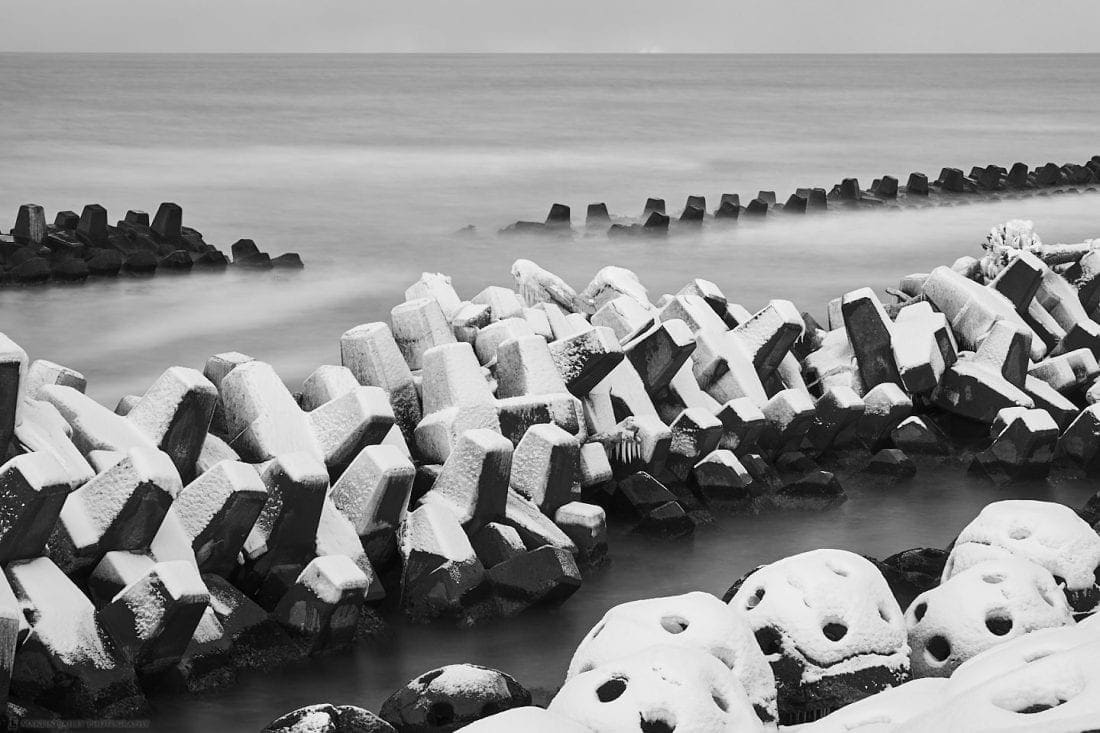
This was shot from the other side of a water duct that was running down to the sea, and I had to crop in tight along the bottom of the frame to avoid the duct’s wall, and that meant cropping into the two balls at the bottom of the frame, with the dusting of snow.
In my photographs I always try to focus on what most interests me, and for these shot, it’s those two darker balls, but I had to crop into them, which is of course not great, but when I look at the photo I still find myself diving in to the detail in those balls at the bottom of the frame. Luckily, the rest of the shot still appeals to me, with the layers of tetrapods and golf balls, and the 30-second exposure that I used with my 10 stop ND in the relatively bright sunlight still gave me a nice smooth sea, but with some texture.
Boat Graveyard 2019
A little later, we made our first visit to the Boat Graveyard, that I absolutely love to photograph each year. There wasn’t quite as much snow as usual in some areas, but the drifts behind these boats were still there in full form, and the grasses that are showing through almost add to the texture and grittiness of the shot, so I’m still very happy with this.
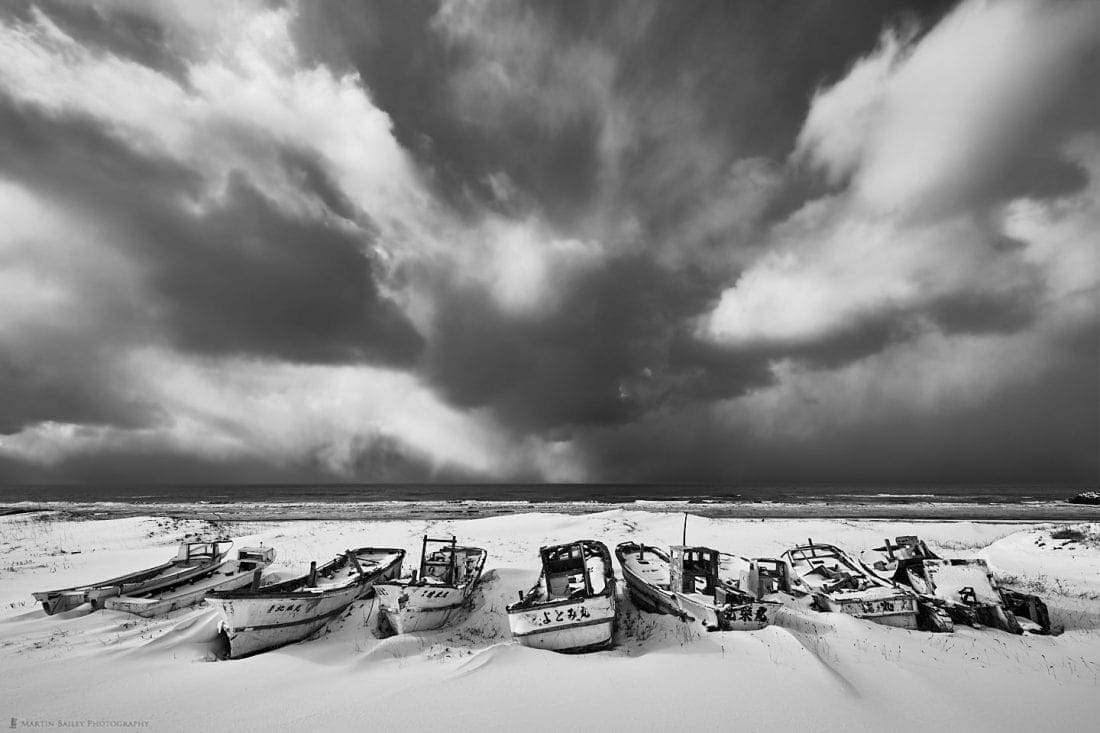
As with the Torii Gate shot earlier, I once again applied a Luma Range mask to the sky in this shot, to easily increase the contrast between the dark and light areas of the clouds, for added drama. I also cloned out a few stalks of grass that were poking into the frame along the bottom edge.
My settings were an aperture of f/14, for a 1/50 of a second at ISO 100, and a focal length of 16mm. I was using my EF 11-24mm lens with the Canon Control Ring Mount Adapter. This allows me to use my EF lenses with the EOS R, and have the Control Ring, so that I can change my ISO according to my custom settings, by turning the Control Ring.
Snowdrift Wood
Having less snow than usual presented us with other bonuses, such as this large piece of driftwood, that was visible on the bank near the boats, and again, more grasses than usual added a nice touch for this photograph. I was drawn to the light coming through the snow clouds, and there is a single stalk of grass poking up through the snow in the center of the top third, that crooks over to the right, then
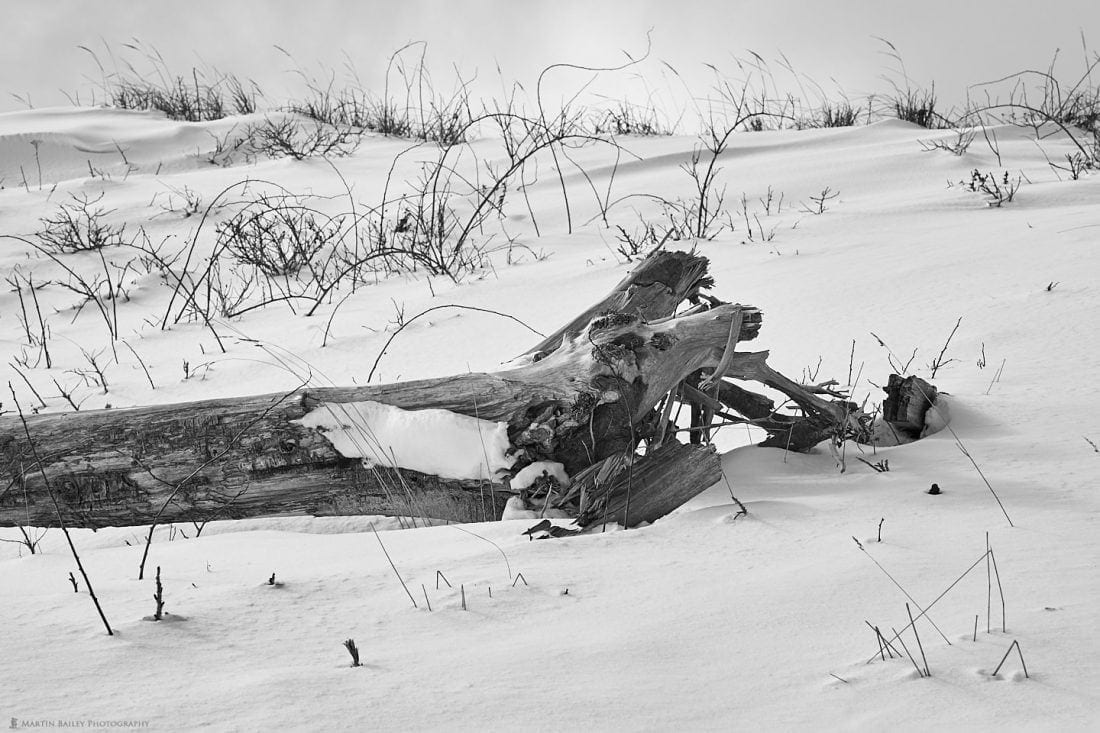
I was actually drawn to this grass and the light more than the log, but I think the grass was happy enough to step back and play a supporting role in this photograph. I did very little to this, really just converting it to black and white, and giving it a small tweak on the levels and Luma tone curve to bring out the texture of the snow a little.
My settings were f/14, for a 1/50 of a second shutter speed at ISO 100, and a focal length of 92mm, now back working with my RF 24-105mm lens. I’ve been incredibly happy with the image quality of this new lens along with the EOS R, which I used almost exclusively throughout this tour.
Fish Drying Frames
After lunch in Wakkanai, we headed over to the fish drying frames that you see in this photograph. I did a long exposure for this, for 60 seconds, to introduce a little bit of movement in the sky, more visible to the right of the frame, and also to smooth over the sea that you can perhaps just make out poking through the gap at the end of the frames.

I shot this from the side as well, but I do like the symmetrical nature of this shot, with the structures balanced equally in the frame. It’s kind of a one-point perspective, like the compositions that we see a lot in Stanley Kubrik’s movies. My other settings for this were f/14 at ISO 100, and a 61mm focal length.
Boat Graveyard in Snow
The following morning we went back to the Boat Graveyard for some different light, and were treated to a little falling snow, as we can see in this image. My guests often ask about shutter speeds and falling snow, and here I increased my ISO to 400 at f/14 to get a 1/125 of a second shutter speed, which is sufficient to mostly freeze the snow in the air. Some of the snow closer to the camera is streaking slightly, but the further away snow is all suspended in mid-air. I find that to be just the right balance for this shot.

I zoomed in quite a lot to 87 mm for this shot, again, mostly to accentuate the snow in the air against the boats that are obviously larger in the frame at this focal length. And I also processed this slightly darker to add drama and context for the snow.
MBP Pro Membership
Of course, you might not be able to see all of the detail that I’m talking about in the Web-sized version, so note that I am also now releasing a high-resolution eBook article of all of my posts, which are available as part of my new MBP Pro subscription, which is currently available at the Bronze level, until I ramp it up further in March, after I finish my winter tours. There will be prorated upgrade prices available too, so if you are interested, jump on board now, and then consider the upgrade later at no extra cost.
Hokkaido Landscape Photography Adventure 2021
Many people have also been inquiring about spaces on my Hokkaido Landscape Photography Adventure Tour, which is sold out for 2020, but I have now updated our website with a 2021 page, so you can now book for that if you are interested. Details and the reservation payment buttons are now available at https://mbp.ac/hlpa.
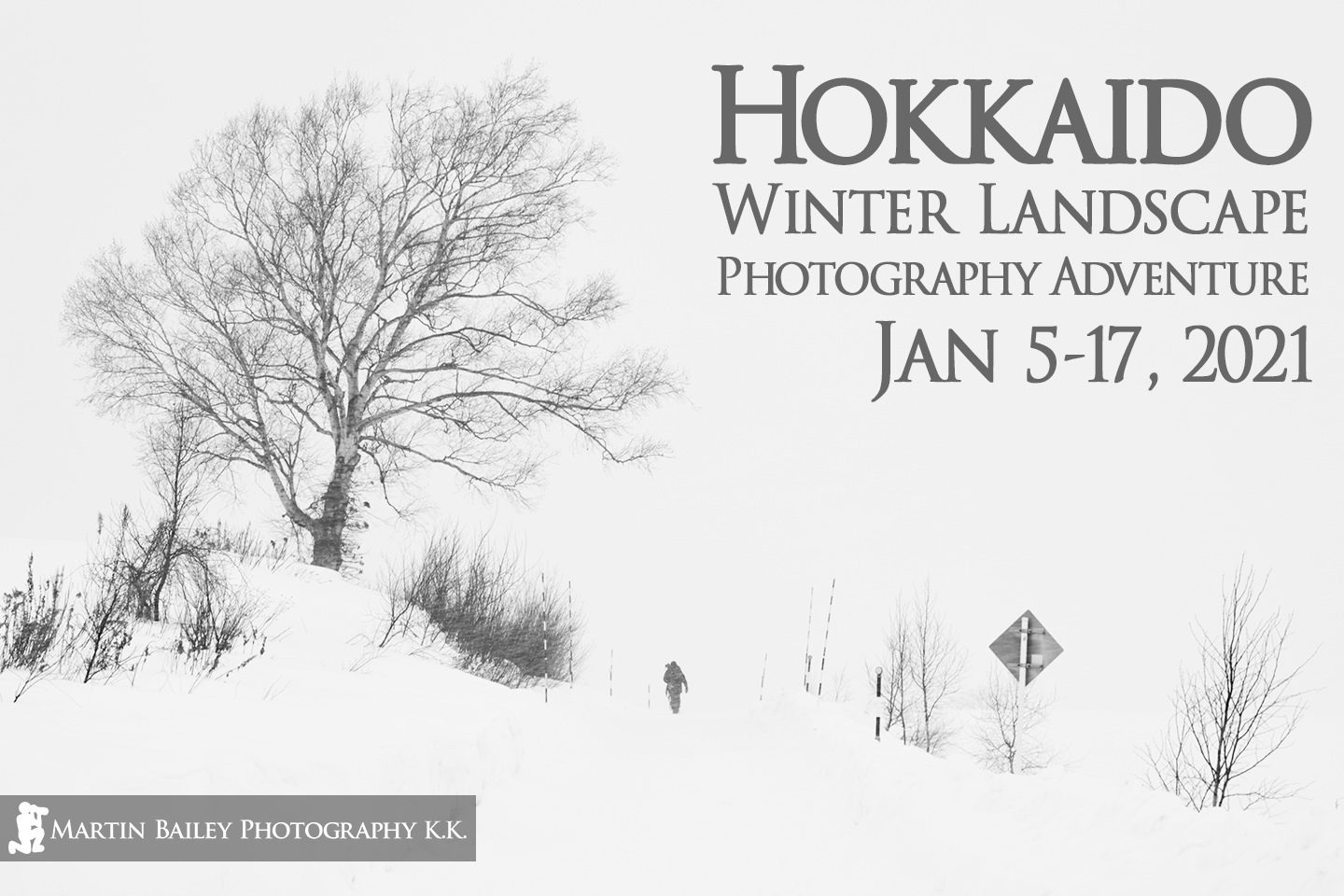
Show Notes
See details of our currently available Hokkaido Landscape Photography Adventure tour here: https://mbp.ac/hlpa
Audio
Subscribe in iTunes to get Podcasts delivered automatically to your computer.
Download this Podcast as an MP3 with Chapters.
Visit this page for help on how to view the images in MP3 files.



Hi Martin, Terrific podcast and wonderful photos. I hope to join you one of these days in Japan or on another one of your photo trips. You narrate your trips wonderfully.
All my best, Joel Kleiner